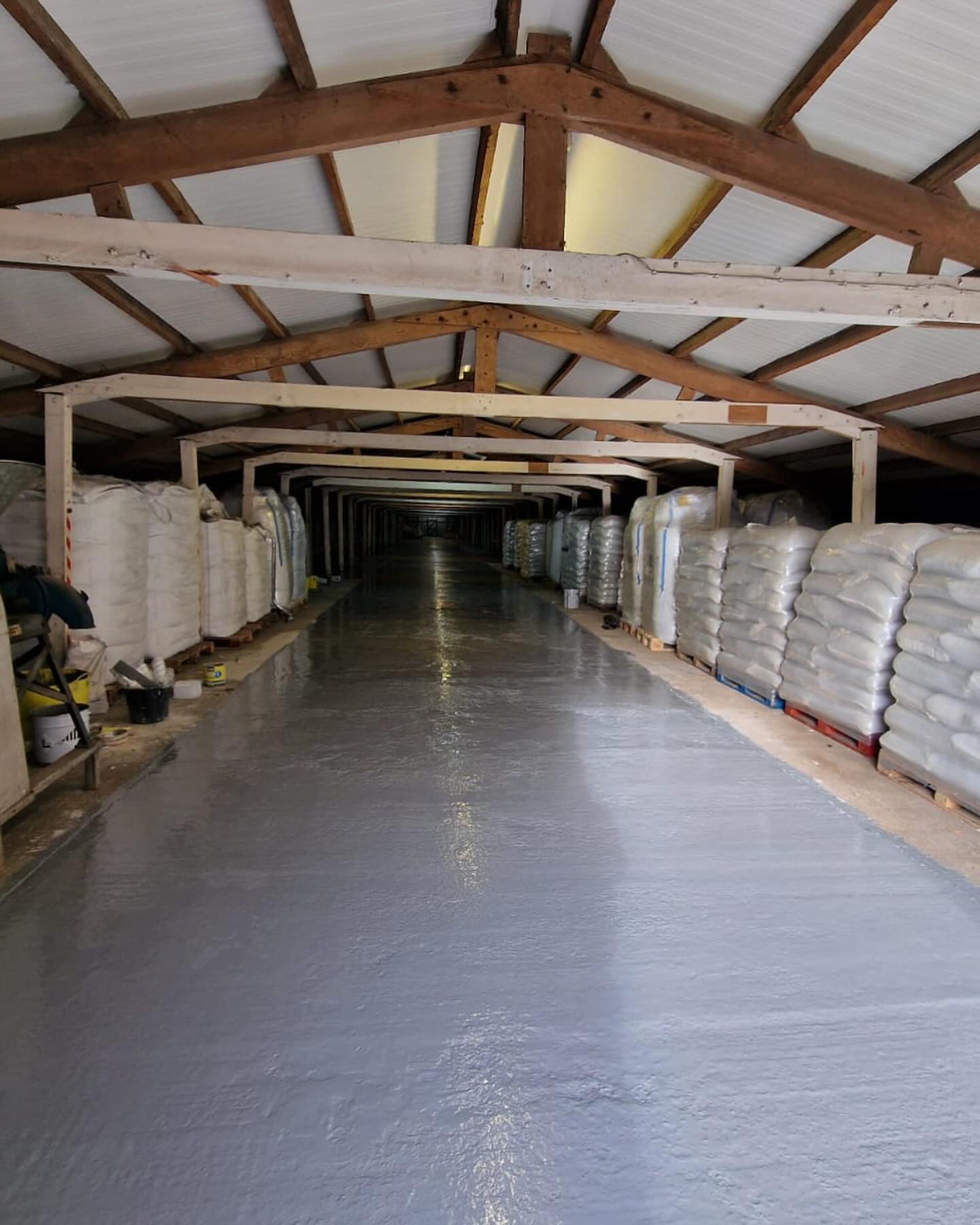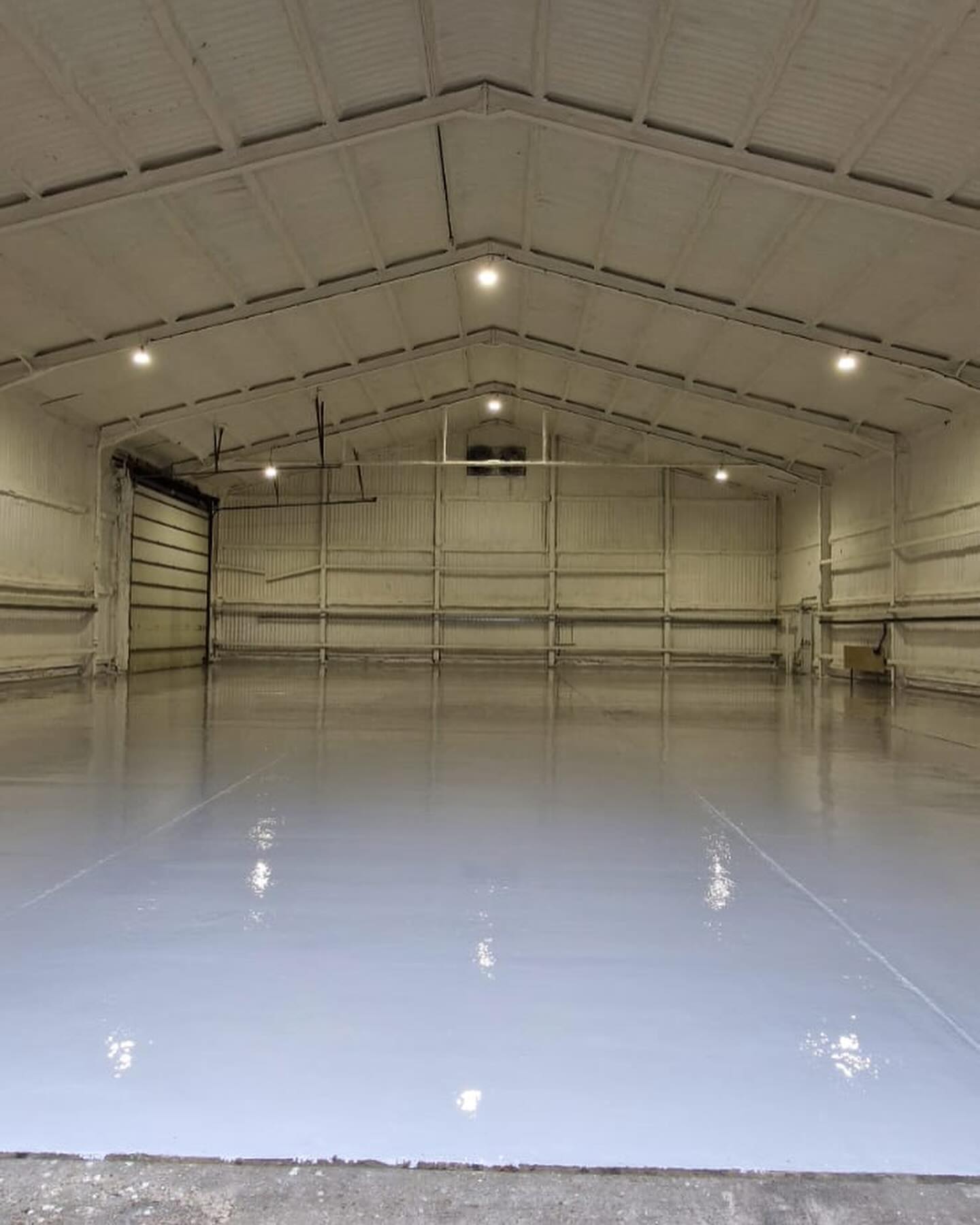PU (polyurethane cement) screed at 6-9mm thickness costs £11-15 per m² but withstands extreme thermal shock, heavy impact, and aggressive chemicals, making it essential for food processing and heavy industry. Epoxy coatings at 2-3mm cost £11-15 per m², providing excellent protection for standard warehouse operations without extreme temperature or impact exposure.
The choice between PU screed and epoxy coating often determines whether an industrial floor survives or fails under extreme conditions. While both use polymer technology, they're fundamentally different systems designed for different challenges. Our experience installing both in demanding environments across London reveals when thick polyurethane screed systems justify their premium over standard epoxy mortar coatings.
Understanding Thickness Requirements
PU screed systems range from 4mm to 12mm thickness, with 6-9mm being standard for heavy-duty applications. This thickness isn't just about durability - it creates thermal mass that absorbs temperature shocks and distributes point loads across larger areas. The material itself resembles concrete more than paint, trowel-applied rather than rolled.
Epoxy coatings typically apply at 2-3mm for standard systems, up to 5mm for self-levelling applications. This thinner profile suits facilities with good concrete substrates needing protection rather than reconstruction. The coating enhances rather than replaces the substrate's structural properties.
| System Type | Typical Thickness | Application Method | Coverage Rate |
|---|---|---|---|
| PU Screed Standard | 6-9mm | Trowel applied | 6-9 kg/m² |
| PU Screed Heavy | 9-12mm | Pump & trowel | 9-12 kg/m² |
| Epoxy Coating | 2-3mm | Roller/squeegee | 2-3 kg/m² |
| Epoxy Self-Level | 3-5mm | Pour & spike | 3-5 kg/m² |
Thermal Shock Performance Reality
PU screed handles temperature swings from -40°C to +120°C without cracking, crucial for steam cleaning at 140°C followed by blast chilling at -35°C. Food processing areas routinely subject floors to 100°C+ temperature changes within minutes. PU screed's coefficient of thermal expansion closely matches concrete, preventing delamination during these extremes.
Standard epoxy fails catastrophically under such thermal shock, cracking and delaminating when temperature changes exceed 30°C rapidly. While special flexible epoxies handle moderate thermal cycling, they can't match PU screed's extreme temperature tolerance. For standard warehouse conditions without steam cleaning, epoxy's thermal limitations rarely matter.

Impact and Load Distribution
PU screed's thickness and slight flexibility absorb impact energy that would shatter thinner systems. Dropping a 25kg metal component from 2 metres might chip PU screed's surface but won't cause system failure. The same impact cracks epoxy coatings through to the substrate, creating water ingress points and hygiene issues.
For static loads, both systems perform well within limits. PU screed handles 50-80 N/mm² compression, while quality epoxy manages 60-70 N/mm². The difference appears under dynamic loads - forklifts turning with full loads create twisting forces that PU screed's flexibility accommodates better than rigid epoxy.
Need Heavy-Duty Floor Protection?
Our experts assess your operational demands to specify either PU screed or reinforced epoxy systems for optimal performance and value.
Get Your Free AssessmentChemical Resistance Comparison
PU screed resists acids, alkalis, oils, fats, and most food-related chemicals indefinitely. Lactic acid from dairy, acetic acid from vegetables, and blood from meat processing - common destroyers of standard floors - don't penetrate PU screed. This resistance remains effective from pH 2 to pH 12, covering most industrial exposures.
Epoxy offers excellent resistance to many chemicals but shows weakness against lactic and other organic acids common in food production. Concentrated acids above 30% cause deterioration over time. However, for petroleum products, solvents, and standard industrial chemicals, epoxy protection equals or exceeds PU screed.
Installation Complexity and Time
PU screed installation demands expertise:
- Substrate preparation to strict standards
- Primer application within tight windows
- Mixing three-component system precisely
- Trowel application requiring skilled finishers
- 12-24 hour cure before traffic
- 5-7 days for 1000m² typical
Epoxy coating installation offers more flexibility:
- Standard surface preparation sufficient
- Two-component mixing with wider tolerances
- Roller or squeegee application
- 24-48 hour return to service
- 3-4 days for 1000m² typical

Real Cost Analysis Including Lifecycle
| Cost Element | PU Screed (9mm) | Epoxy Coating (3mm) |
|---|---|---|
| Material per m² | £11-15 per m²-£11-15 per m² | £15-£11-15 per m² |
| Installation per m² | £10-£11-15 per m² | £5-£10 |
| Total Initial Cost | £11-15 per m²-£11-15 per m² | £11-15 per m²-£11-15 per m² |
| Expected Lifespan | 20-30 years | 10-15 years |
| Annual Maintenance | £0.20-£0.50 | £0.50-£1.00 |
| 20-Year Total per m² | £11-15 per m²-£11-15 per m² | £11-15 per m²-£11-15 per m² |
Despite higher initial cost, PU screed's extended lifespan often delivers lower total cost in demanding environments. Factor in avoided downtime from floor failures, and PU screed's value proposition strengthens further.
Surface Texture and Safety
PU screed naturally creates orange-peel texture providing excellent slip resistance even when wet. This integral texture won't wear away like broadcast aggregates in food processing flooring installations. The matt finish hides wear patterns and maintains consistent appearance despite heavy traffic.
Epoxy systems offer more aesthetic flexibility - from high-gloss to matt finishes, with various aggregates used in anti-slip flooring broadcast into the surface. However, these aggregates can dislodge over time, creating inconsistent slip resistance. Glossy epoxy becomes hazardous when wet unless specifically textured.
Strategic Decision Framework
Choose PU screed when:
- Steam cleaning or thermal shock occurs regularly
- Heavy impact from dropped items is common
- Food production hygiene standards apply
- Substrate quality is poor but replacement impossible
- 20+ year service life is required
- Downtime for repairs would be catastrophic
Select epoxy coating for:
- Standard warehouse operations
- Climate-controlled environments
- Light to medium industrial use
- Decorative requirements important
- Budget constraints exist
- Good quality substrate present
Consider hybrid approaches: PU screed in production areas with epoxy coatings in warehousing zones optimises both performance and budget. Many facilities benefit from strategic deployment based on specific zone requirements.
For standard industrial needs, explore our epoxy versus polyurethane coating comparison. For rapid installation needs, see our guide on fast-cure MMA systems.
Specify the Right Heavy-Duty System
Every industrial facility has unique demands. We'll analyze your specific conditions and recommend the optimal floor system - PU screed, epoxy, or strategic combination.
Get Your Free Specification